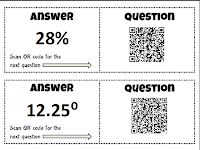
I am trying to mix it up and get some more real-world application going on in this unit (perhaps a Vegas week!?), but until then, I am getting into the middle school mindset with a gross activity to teach probability with independent events. I got this idea from a Harry Potter themed baby shower (side-note, best baby shower theme ever!). Bertie Botts Every Flavor Beans (well, actually they are Jelly Belly brand "Bean Boozled" beans. Same dif.)
Here's how it worked:
 |
| Fair warning -- I've seen the "Canned Dog Food" flavor gag a grown-man. |
- I had one "Bean Boozled" game (with spinner) and three replacement packs (one for each of my other classes).
- I would spin the spinner and we would talk about the probability of getting each space. Then, we talked about the predicted number of each type of bean there was, given the total (at the end this led to a good talk of theoretical probability vs actual or experimental probability).
- I would then pass out however many beans there were of that flavor (to volunteers of course, no forced jelly-bean-eating here)
- They would eat their beans one at a time. We would recalculate the theoretical probability for each flavor as one was eaten
- As we went on we calculated the probability of getting three of the "bad flavors" in a row
This was a great activity that engaged my students at their level: candy, gross things, watching their classmates (and teacher) gag. We did all the math on whiteboards (paperless, woot!) and all it costs me was the candy $2.99 for game, $1.79 for each replacement pack from Party City. Might have been cheaper at Wal-Mart). Not too bad in my opinion (and I am super cheap when it comes to buying stuff for my classes).
So, if you need a fun way to engage your students in the topic of probability I recommend Jelly Belly's "Bean Boozled" game!










